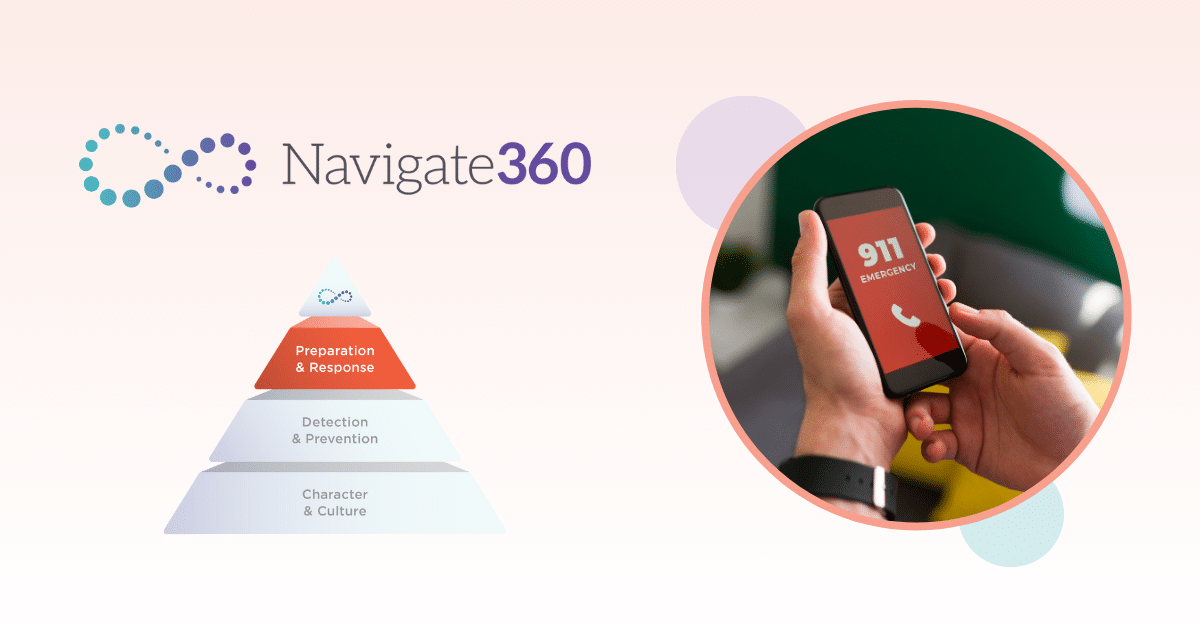With only a few weeks into the 2021 school year, we have already witnessed numerous critical events at schools, some of them resulting in tragic outcomes. These unfortunate events have brought to light the need for schools to revisit how they respond to these incidents, including reunification plans. A well-planned and trained process of bringing together displaced students with their parents or guardians – family reunification – is crucial for reducing stress, confusion, and chaos in the aftermath of a critical event.
Schools should include a plan for reunification in their Emergency Plans, ensuring staff, parents/guardians, students, law enforcement, and other community partners are informed and trained in case a real-life emergency should occur. If a plan hasn’t been practiced and trained, schools should assume that it will fail during an actual event. Luckily, there are things a school can do to strengthen their reunification strategies, instilling confidence in school safety and reducing stress of those involved.
Best Practices for Creating an Effective Reunification Strategy
A cohesive, comprehensive reunification strategy requires collaboration across all areas of the school environment, from district administration to educators to students and their parents or guardians. To limit chaos and confusion from parents, students, and staff, a reunification plan should cover the process from beginning to end and ensure thorough testing and training prior to a critical event.
1. Assess Your School’s Safety Gaps
A risk assessment should be used to identify gaps in school safety, including reunification procedures. An unbiased risk assessment performed by certified professionals will provide a comprehensive report across 6 critical areas on where schools need to improve for safety and compliance, including a prioritized action plan on what needs to be addressed in the short- and long-term
2. Create a Plan — Including a Secondary Reunification Site
Emergency events are stressful for all involved, leading to high emotions, chaos, and confusion. Developing, training, and testing a plan that encompasses the reunification and information sharing process from beginning to end will help to limit chaos from parents, students, and staff during a real-life critical event. During reunification planning, schools should consider:
Account for everyone involved with accurate documentation – Up-to-date student and staff rosters that can be printed at the on-site location is critical information for school personnel. Reunification Cards should be prepositioned for each student and updated regularly in the school’s emergency management system for signing out of students. The location should be mapped to show the flow of traffic, parents, and students during reunification.
Plan for the site of the emergency event – The event site (the school building and/or grounds) is chaotic during an emergency such as an active shooter. The school’s emergency planning team should consider who will remain at this site while students and personnel are evacuating — this should be School Resource Officers as well as any administrators who are assigned to this post — and plan for transportation at the school or en route to the school, considering students and staff with special needs or language barriers.
- Are there any evacuation or transportation accommodations to consider for students or personnel with disabilities?
- Are there any language barriers for students or staff that will need specific communication accommodations during the evacuation and reunification process?
An efficient plan for the site of the critical event will help influence a smoother process at the reunification/information site.
Plan for the reunification and information site – It’s important to keep in mind that the reunification site will also serve as an information site. In tragic events, this location will not only be used for reuniting parents or guardians with their children but also for informing parents or guardians of the status of their child, whether wounded, missing, or deceased. Plans need to account for a location for sharing this emotional news privately and separately from other people waiting.
Additionally, a reunification site will likely include media who will want to interview students, parents, and staff. A media relations plan should be put in place and trained in anticipation of a critical event to protect the integrity and accuracy of information getting out to the public, as well as the school and district’s reputation.
Another important factor in planning for the reunification site is to ensure there is an alternative site should the first be compromised or unavailable. The second site should be known to a select group of emergency planning personnel but not shared with students or other staff to mitigate the risk of it being compromised.
Other considerations for the reunification site:
- Are there mental health and trauma resources? Providers should be identified in the plan and be prepared to respond immediately upon being notified of an event. Law enforcement trained as CIT Officers should be readily available to bridge the gap until other mental health providers can arrive.
- Is there accessibility to the internet?
- Where are the entrance and exit routes for parents and students?
3. Communicate with Students, Parents, Staff, and Media
Communicating the plan ahead of time with those who will be involved during a critical event is vital to ensuring a smooth execution during a real-life emergency. The consequences of a lack of communication before, during, and after an event is mass confusion and chaos.
Communication Before, During, and After Event
Emergency and critical events are high-stress and high-emotion environments, and parents’ priority is to locate and reunite with their child. Reduce risk of confusion and chaos during an event by communicating beforehand with parents where and when they will go to reunite and find out information about their child, to staff on the role they will play during reunification, and to students on where and when they will reunite with parents and get trauma support. Determine how you will communicate – via text, radio, social media, the school’s website, etc. Consider what role technology will play in your school’s communication strategy. Remember: you may not be able to rely on internet access at the reunification site due to bad weather, high use of the network, priority use for first responders, etc. It is vital you account for this as a real possibility to avoid costly breakdowns in your communication efforts.
Staff Roles and Responsibilities
Outline who will communicate with who and at what times and locations. For example, SROs will typically be at the site of the critical event, while administrators and law enforcement will be at the reunification site. It’s important to set clear roles for each people involved with communicating with parents/guardians, students, staff, and media. Plans should also consider communications with those not at the immediate site such as transportation personnel.
Media Relations
Schools should have a crisis communications/media relations plan in place prior to an event. Otherwise, unauthorized, potentially inaccurate information may leak out through real-time social media channels. Additionally, the school may risk their reputation as a safe place for students. Getting ahead of social media and misinformation will begin assisting in the recovery process for your students, staff, parents, and community.
4. Test and Train the Plan
Practicing the reunification plan helps schools identify pain points and make modifications before a real-life critical event. Students, staff, and parents should train on the reunification process on a regular cadence to increase confidence and muscle memory of what to do during a real event. Training may occur at various levels through phases, i.e.:
- Staff only (tabletop)
- Staff only (props)
- Staff only (location with props)
- Staff, students, parents, transportation, first responders, media
Schools have done this by taking a half-day to train everyone, including parents, students, staff, and first responders. If a plan has not been trained in a meaningful way by all involved, schools should expect it to fail during a real event.
Lessons Learned About Reunification
It’s crucial for schools to have a reunification plan in place that is communicated, tested, and trained so in the case of an emergency, chaos and stress are minimized for all involved. A holistic emergency operations plan that includes a robust, comprehensive reunification strategy will likely use both human resources like local and surrounding law enforcement, safety directors, administration, educators, school support staff (secretaries, bus drivers, custodians, food service workers, etc.), and mental health professionals, as well as technology resources such as an emergency management system to organize, communicate, execute, and resolve reunification following a critical event.
Want to learn more? Get our virtual Reunification Toolkit or learn about the reunification module within our Emergency Management Suite, which helps schools plan and facilitate smooth, effective, and compliant reunification here.




